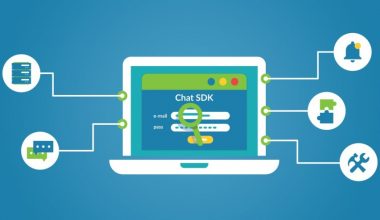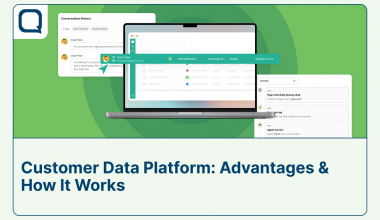While video calls seemed to be a fantasy 20 years ago, now, it is as mundane as talking to your neighbor. Almost no human being with a smartphone and an Internet connection had never used this technology before. Furthermore, web-based video conferences have found its place in people’s lives. webrtc
Video conference, online chat, and voice calls, are considered under one category which is called real-time communication (RTC) technology. RTC enables people to communicate with one another without transmission delays. It can be said that it is instant and has minimal latency. It can even transfer data. Let’s say you have to send a file using WebRTC.
You don’t have to login to access and upload that file, leaving the user as the only one who can download the file. ith WebRTC, it can be transferred directly through the WebRTC Data Channel, without the need of a server. WebRTC is created to facilitate peer-to-peer communication though it isn’t like broadcasting, which is live-streamed, because it is only done in a one-way communication.
The Difference Between Application Based and Web-based RTC
WebRTC is a disruptive technology that leverages on plugin-free APIs that can be used in browsers, both mobile and desktop. Nowadays, to run a WebRTC, one doesn’t need an external plugin as it can be done without it and still achieve similar functionality.
There is nothing like Flash, Silverlight, ActiveX controls or Java applets that need to be installed. It is purely communication on a webpage. WebRTC allows you to have communicate in real time, regardless of device, connecting mobile to desktop and vice-versa.
The application of WebRTC can be enhanced further not only for small and simple talk, but can also largely facilitate businesses and services, such as healthcare, e-commerce, education, or even financial services. Most of the time, if a person wants to communicate with another person, the said person must agree to begin the communication, locate one another, and transmit all multimedia communications.
The greatest challenge to this technology is locating and establishing a network socket connection. This has to be done in order to transmit the data bidirectionally.
The Perks of Using WebRTC
Firstly, if you want to develop this on your own, you can access a free and open API. It is available for both individuals and companies which opens the possibilities of everyone owning their unique signature WebRTC. The other benefit of using this is that you can adjust the quality of communication based on network and bandwidth conditions.
Furthermore, this is easy to implement into your business system and smaller in price than application-based conferencing systems. Plus, for the security of your users, you can also implement encryption to your WebRTC. Ensuring a secure transmission across networks.
While WebRTC opens up the way to opportunities and is developing vastly. The obstacles are still there, such as the difficulty of keeping up with the fast-changing technology. Which means that it constantly needs you to update your systems.
If you aren’t quick enough, then you will be outrun by your competitor. However, if you can collaborate both the innovation and technology processes in harmony. You can then provide better and faster means of communication for yourself and your users.
As easy as it may seem to be, implementing WebRTC can give you a headache to establish a secure, fast, and fully function connection. While juggling the other needs of your business, Qiscus, a WebRTC expert. Has a strong presence in Southeast Asia who is able to provide chat and call engines for businesses. Qiscus has already assisted our clients from various sectors, such as Halodoc in healthcare, Ruangguru in education and even Indonesia’s giant telecommunication company, Telkom. We have helped to digitize their systems by developing RTC technology and we can help you too. Talk to us at www.qiscus.com or e-mail [email protected].



